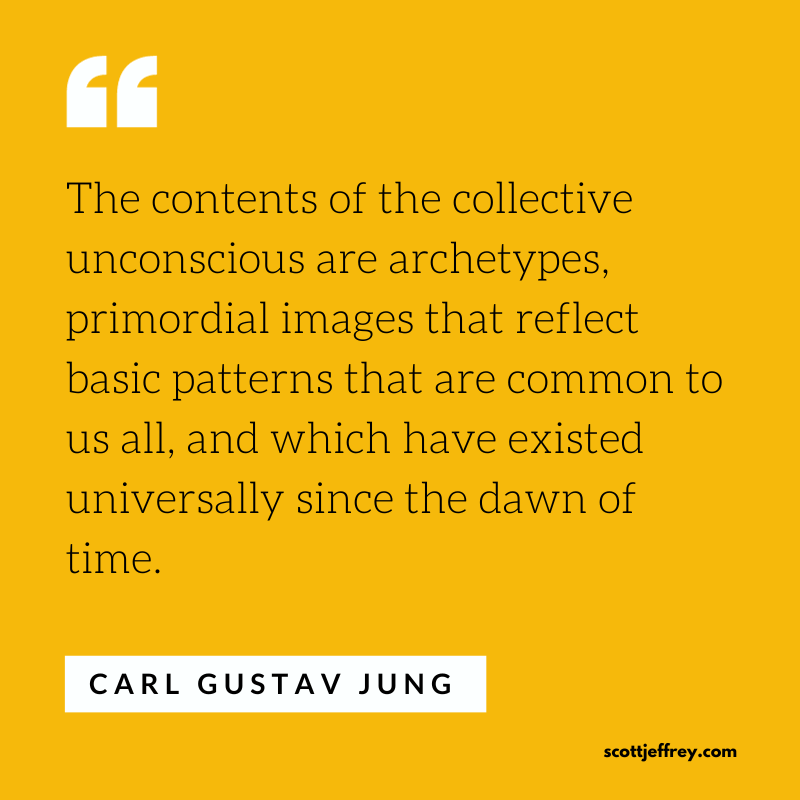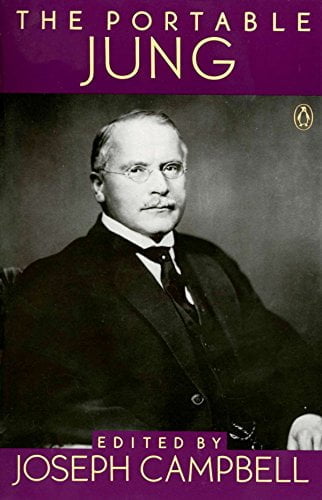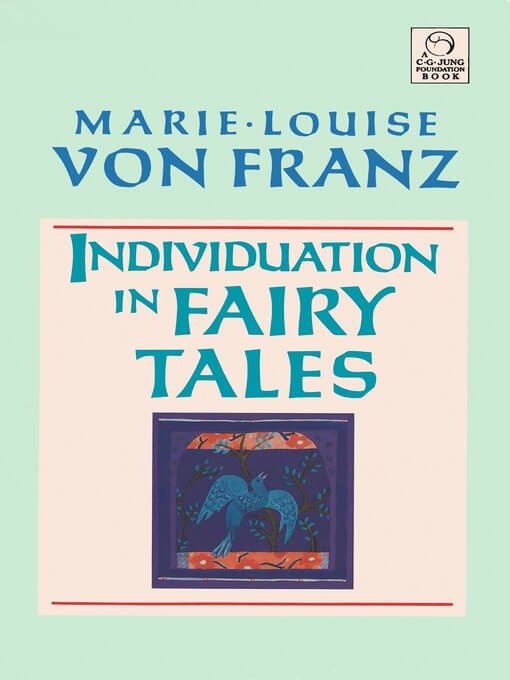OVERVIEW: What is depth psychology? This primer explores the field’s background, breaks down 10 core concepts related to Jung’s analytical approach to the psyche, and highlights primary methods.
______________
Are you interested in exploring the psyche?
To enter the DEEP—the world of the unknown?
To go where most fear to tread … to return home to the Self?
Let’s dive in …
What is Depth Psychology?
Depth psychology is the study of the unconscious (sometimes referred to as the “unconscious mind”).
Professor of psychiatry Eugen Bleuler coined the term “depth psychology” at the turn of the twentieth century.
Bleuler was the director of the Burghölzli Asylum in Zürich, where Carl Jung began his career.
Analysts like Sigmund Freud, Alfred Adler, and Otto Rank contributed to the development of this field. However, this field is most closely associated with Jung’s work.
The approaches of this first wave of psychology seek to go beyond behavioral and cognitive processes to the unconscious motivating factors beneath them (hence the term “depth”).
To access the person’s unconscious, the field of depth psychology uses dreams, images, symbols, synchronicities (meaningful coincidences), associations, and slips of the tongue to understand the dynamics of the unconscious better.
This psychology studies the nature of the unconscious, drawing on insights from mythology, religion, alchemy, philosophy, literature, and the arts.
The Jungian approach takes us to a deeper understanding of ourselves—the psyche, the shadow, and the unconscious.
Why is Depth Psychology Important?
Jung’s psychology is arguably entirely different from most modern psychological theories and practices. (Numerous neo-Jungian models like James Hillman’s Archetypal Psychology are in a similar vein.)
Jung’s analytical approach is about plumbing the depths of the unconscious through dreams and images to build consciousness.
By bringing the unconscious material of the individual to consciousness—both personal and collective—one moves from fragmentation and “one-sidedness” toward wholeness.
Jung believed that we were all searching for the same thing: the soul.
From his view (and direct experience), one needs to embrace one’s inner world—exploring one’s dreams and imagination—to eventually arrive at a stage of wholeness where one’s soul is realized.
In this way, Jungian psychology shares many insights with Eastern philosophy and Western mysticism, even though Jung’s methods were different.
Jung believed that Westerners needed different methods and approaches from Easterners. However, with the development of transpersonal psychology (the “fourth wave” of psychology), that belief has changed.
Why is Depth Psychology Challenging?
Approaching, examining, and integrating one’s unconscious is no easy feat.
While the conscious mind is at home with logic, reason, concepts, and language, the unconscious is a repository of images, symbols, and feelings.
The conscious mind likes order, while the unconscious often seems guided by chaos. Together, they represent opposing forces—yin and yang.
For this reason, the practitioners of depth psychology had to develop a new language for studying and interpreting symbols and new methods for communicating through images.
Harmonizing the opposites can be difficult, as it requires an alchemical process that ultimately leads to psychological integration.
Additionally, the conscious mind (or ego) has a host of defense mechanisms to maintain its current self-identity.
To get to know one’s shadow—the parts of oneself that one is cut off and divorced from—requires repeatedly confronting the ego’s identity. Depending on one’s level of internal resistance and will, this process can be challenging for many individuals.
For this reason, practitioners like Jung (and scholars like Joseph Campbell) consider it a “heroic act” to bridge the gap between the conscious and the unconscious.
Depth Psychology versus Classic Psychoanalysis
Early in Carl Jung’s career, Sigmund Freud was like a father figure to him.
In fact, Freud was grooming the younger Jung to be his successor. But the two men didn’t see eye to eye. (In the end, their professional relationship ended rather abruptly.)
Before their breakup, Sigmund Freud named his field psychoanalysis, as in the study of psychotic and mentally ill people.
Jung suggested a different name for their emerging field: psyche-analysis.
Psyche is a term representing the totality of a person’s being. Jung saw their role as an analysis of the human mind, soul, and spirit. That is, Jung saw a very different picture of the human condition than Freud.
Freud perceived his patients to be ill while he, as an analyst, was not. Psychoanalysis, unfortunately, set the tone for the next century of psychology, which mainly focused on mental illness.
In contrast, Jung related to his patients, realizing he was in many ways in a similar mental condition to theirs.
Jung believed that we are ALL fragmented and divided, and knowingly or not, we’re all searching for our souls. This search for one’s soul is at the center of depth psychology.
Sigmund Freud (center) and Carl Jung (right) in 1909
Credit: Wellcome Library, London. Wellcome Images
Why Isn’t Depth Psychology More Popular?
The insights derived from analytic theory are, for the most part, found outside academia.
In fact, if you pursue a Ph.D. in psychology, you aren’t likely to interact with Jungian theory except perhaps in a history class (where they teach you that psychoanalysis was the “first wave”).
The academic field of psychology is, as Jung would say, one-sided. It’s almost exclusively focused on the conscious mind (what he called the thinking function).
As such, cognitive behavioral therapy (CBT) is one of the more popular forms of psychology. It makes sense—most people entirely operate within the conscious mind, the realm of the ego. Here, the ego is in charge and tries to control itself and its environment.
Depth psychology, in contrast, requires us to interact with the unconscious domain—to enter the often ambiguous world of symbols, images, and feelings.
Depth psychology is generally too messy for the average person, especially someone who may be academically oriented and seek a clearly defined, rigid structure.
What Benefits Does Depth Psychology Offer?
Before you begin these types of inner processes, it’s challenging to appreciate the profound influence unconscious forces have on your everyday life, regardless of how much information you read.
Inner work can influence virtually every area of your life. Applying these principles and methods can help you:
- Develop a clearer perception of yourself and others.
- Resolve internal tensions that cause anxieties and unwanted behaviors.
- Enhance your overall health and vital energy (due to less internal psychic tensions).
- Improve your relationships with others because you’ll have fewer triggers and judgments.
- Express more of your innate creative impulse that enriches you with personal meaning.
- Become more integrated with a greater sense of wholeness.
Although the process of inner work can be arduous, its rewards are great.
Jung’s Model of the Psyche
10 Core Concepts in Jung’s Work
Below are ten core concepts you’ll discover in Jungian psychology.
This is not meant to be an exhaustive list but is designed merely to give you a sense of what analytical psychology is all about.
Personal Unconscious
The personal unconscious represents everything within the individual’s psyche that is unknown to them.
One of the distinguishing characteristics of depth psychology is that it suggests multiple levels of the unconscious. In classic psychoanalysis, there’s just the unconscious, which is mainly at odds with the individual’s conscious identity.
Depth psychology differentiates between the personal unconscious and the collective unconscious. Decades later, in transpersonal theory, Ken Wilber differentiated five unconscious levels.1Ken Wilber, The Atman Project, 1980.
Collective Unconscious
Jung attempted to describe the collective unconscious, the inner world of the collective psyche filled with universal and impersonal images, symbols, and motifs (archetypes).
He turned to mythology and fairy tales to help him relate to the repetitive themes in his and his patients’ dreams. For Jung, the collective unconscious is a repository of primordial images (archetypes) and behavioral patterns that are universal (cross-cultural) and age-old.
Jung considered these images “collective” because they were not acquired by individuals in their lifetime. That is, the archetypes within the collective unconscious didn’t represent learned behavior. Yet, they were accessible to all. (This concept is similar to biochemist Rupert Sheldrake’s morphogenetic fields.2Sheldrake, Morphic Resonance: The Nature of Formative Causation, 2009.)
The Psyche
The psyche represents the totality of one’s being, including the body, mind, instincts, soul, and spirit. For Jung, there was a personal psyche related to the individual’s personality and lived experiences, and a collective psyche shared by all.
In modern psychology, the term psyche is sparsely used, as it has been replaced by mind. However, the psyche is a more inclusive term that “transcends and includes” the mind.
Psychological Types
In Psychological Types, Jung explains in great detail the various ways humans process information. Extroverts draw information predominantly from the outside world, while introverts tend to utilize information from within themselves.
The four primary ways of processing information are:
- Thinking
- Feeling
- Sensing
- Intuiting
People’s orientation toward each function differs depending on whether they are introverts or extroverts. For example, introverted thinkers process information differently from extroverted thinkers.
Each of us has a dominant function and an inferior function. Your dominant function is your primary means of evaluating information. It’s the internal muscle that you’ve exercised the most since birth. Your inferior function is the opposite of your dominant function; it represents your weakest muscle in terms of processing information.
The goal here is to arrive at the transcendent function in the Center.
Archetypes
Archetypes play a central role in depth psychology. These primordial images represent the set patterns of behaviors found in the collective unconscious. Archetypes represent semi-autonomous subpersonalities within the psyche that influence most human behavior.
Jung’s work focused on only a handful of archetypes, including the mother, the father, the child, the wise old man, the hero, the trickster, the anima/animus, the shadow, the maiden, and the self. Later, Jungians analyzed many other archetypes.
See: The Psychology of Archetypes: Everything You Need to Know and A Beginner’s Guide to Classic Jungian Archetypes
The Complexes
While the archetypes are universal and impersonal, the complexes are entirely personal. A personal complex is a cluster of emotions based on the individual’s past experiences.
A classic example is the Mother complex. With this complex, a boy’s psyche doesn’t separate from his mother as he enters adulthood. As a consequence, he becomes emotionally dependent on her and seeks a woman to play this nurturing role for him. A man with a mother complex cannot channel his masculine energy to become an autonomous, mature adult.
The Shadow
The shadow represents everything the individual divorces or cuts off from themselves in early development. It’s sometimes referred to as the disowned self.
Getting to know and integrating the shadow is an essential first step in one’s individuation.
See: A Definitive Guide to Shadow Work
(Over 2.5 million readers have read this popular guide.)
Anima / Animus
In Jung’s approach to the psyche, the anima is the feminine aspect of a man’s personality, while the animus is the masculine counterpart of a woman’s psyche.
Jung saw the anima-animus as enlivening souls or spirits within men and women. These archetypes play an essential role in an individual’s life, especially in their primary relationship.
For Jung, anima and animus are essential building blocks in the psychic structure of every man and woman. Integrating the anima-animus is focused on after integrating one’s shadow. It’s considered far more challenging as well.
See: Carl Jung’s Theory of Anima and Animus
The Self
Within the concept of depth psychology, the Self represents the “totality of the whole psyche.” While the ego (or self with small “s”) represents the conscious part of one’s psyche, the Self is more expansive and “divine” in nature.
Realizing or returning to the Self represents the final stage of Jungian psychology.
See: How to Access the Higher Self
Individuation
Later in Jung’s work, he classified the process of human development as individuation.
Jung writes in Two Essays on Analytical Psychology:3CG Jung, The Collected Works of CG Jung, Vol. 7: Two Essays on Analytical Psychology, 1972.
Individuation means becoming an “in-dividual,” and, in so far as “individuality” embraces our innermost, last, and incomparable uniqueness, it also implies becoming one’s own self. We could therefore translate individuation as “coming to selfhood” or “self-realization.”
Individuation takes us through the archetypes covered above: the Shadow, the Anima/Animus, and the Self.
See: Individuation: A Beginner’s Guide to Jungian Psychology
2 Core Methods Used in Jungian Psychology
The process of analysis varies from school to school.
In the case of C.G. Jung’s analytical psychology, the two primary methods are:
- Dream analysis
- Active imagination
The primary goal of depth psychology is to build consciousness so the individual can bring the unconscious to consciousness to achieve psychic wholeness.
Patients (the analysands) meet with their analyst usually every week.
However, untrained individuals can also apply Jung’s principles, insights, and methods to their inner work without an analyst.
Dream Analysis
Dream analysis (or “dream work”) was the central method for revealing the psyche in Jung’s analytical approach.
For Jung, dreams provided a way for us to bridge the gap between our conscious mind and our unconscious. He perceived dreams as a kind of love letter from the unconscious.
In analysis, the patient (analysand) recalls a specific dream or series of dreams, and then the analyst asks probing questions to go deeper into the dream’s meaning.
See: Inner Work: A Beginner’s Guide to Exploring the Psyche
Active Imagination
Active imagination is the process of actively engaging with internal “characters” and figures from within one’s unconscious.
Jung used active imagination to augment his dream analysis.
See: A Practical Guide to Active Imagination
Further Reading in Jungian Psychology
Many of the guides linked above include a “reading list” for those who want to explore these concepts in greater detail. Here, I’ll highlight a few good “entry points” to this work:
Memories, Dreams, Reflections by C.G. Jung
The Portable Jung edited by Joseph Campbell
Individuation in Fairy Tales by Marie-Louise von Franz
The Shadow and Evil in Fairy Tales by Marie-Louise von Franz
Other Guides Related to Depth Psychology
Since 2014, I’ve been publishing in-depth guides on this website. Many of these guides directly relate to Jung’s depth psychology. In addition to the guides listed above, see also:
Psychological Projection: How to Reclaim Your Inner Gold
Projection is an essential concept in psychoanalytic theory. This guide, inspired by Jungian Robert A. Johnson’s excellent book Inner Gold, highlights how we often project the best parts of ourselves onto others (and how we can take them back).
The Game of Self-Deception: A Deeper Look
The conscious mind (or ego) often resists internal processes like shadow work. Understanding the patterns of resistance and avoidance can help practitioners bring them to consciousness so they can move beyond these games.
Puer Aeternus Archetype: A Deep Decoding of the Peter Pan Syndrome
This in-depth guide explores the archetype of the Eternal Child.
21 Best Carl Jung Books and Best Jungian Psychology Books
Excellent suggestions for beginners and seasoned practitioners across a range of Jungian-related topics.










